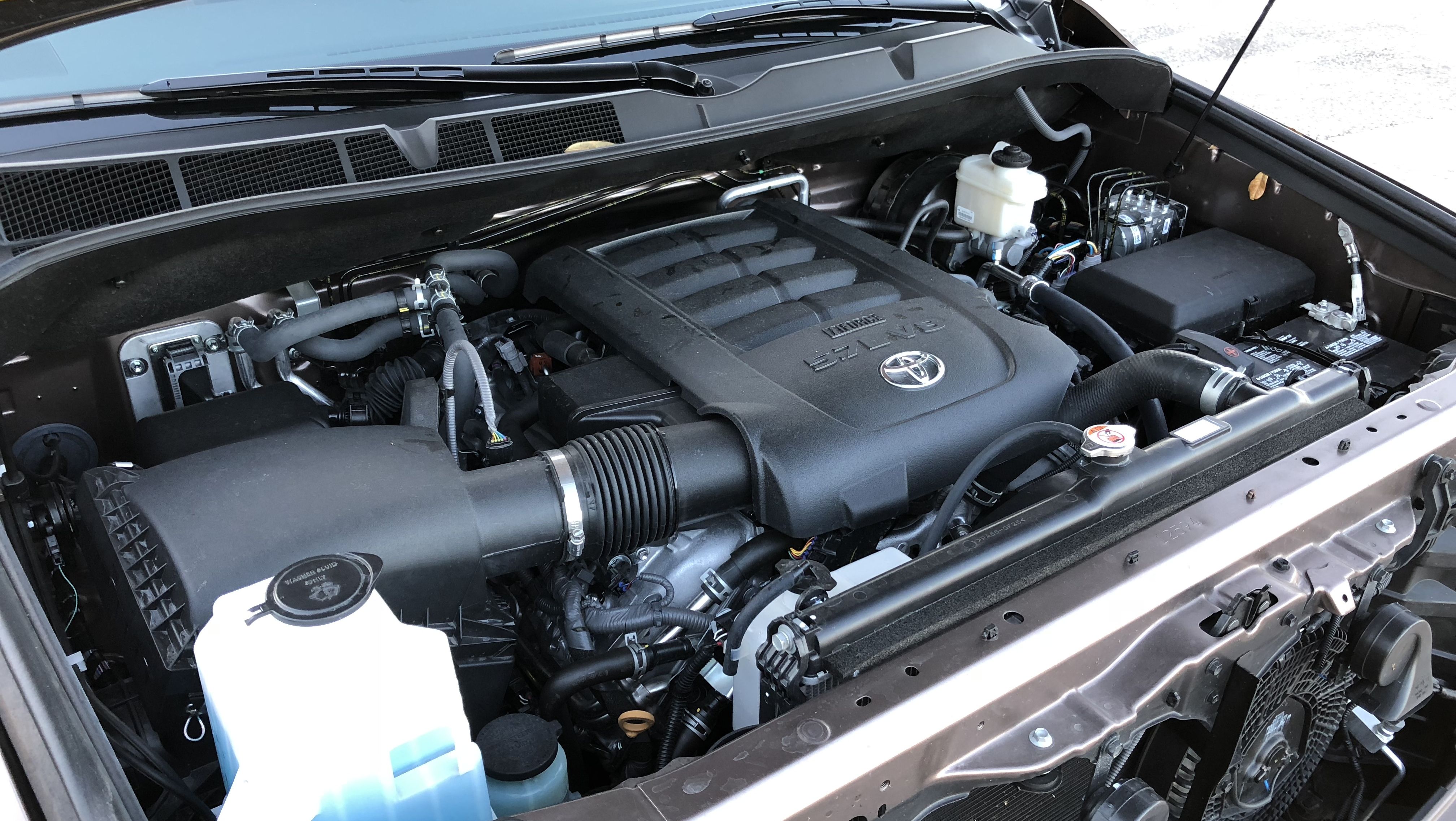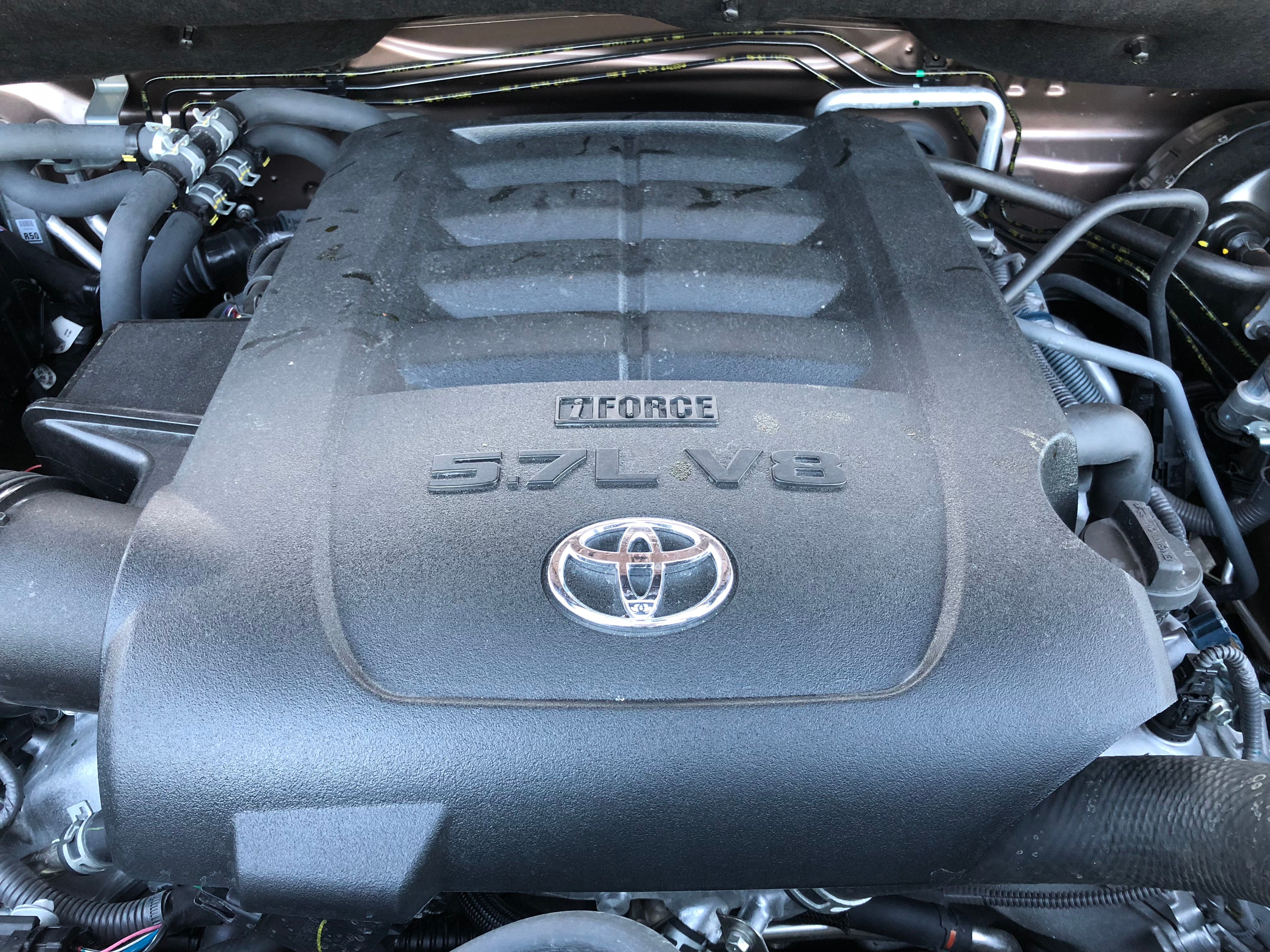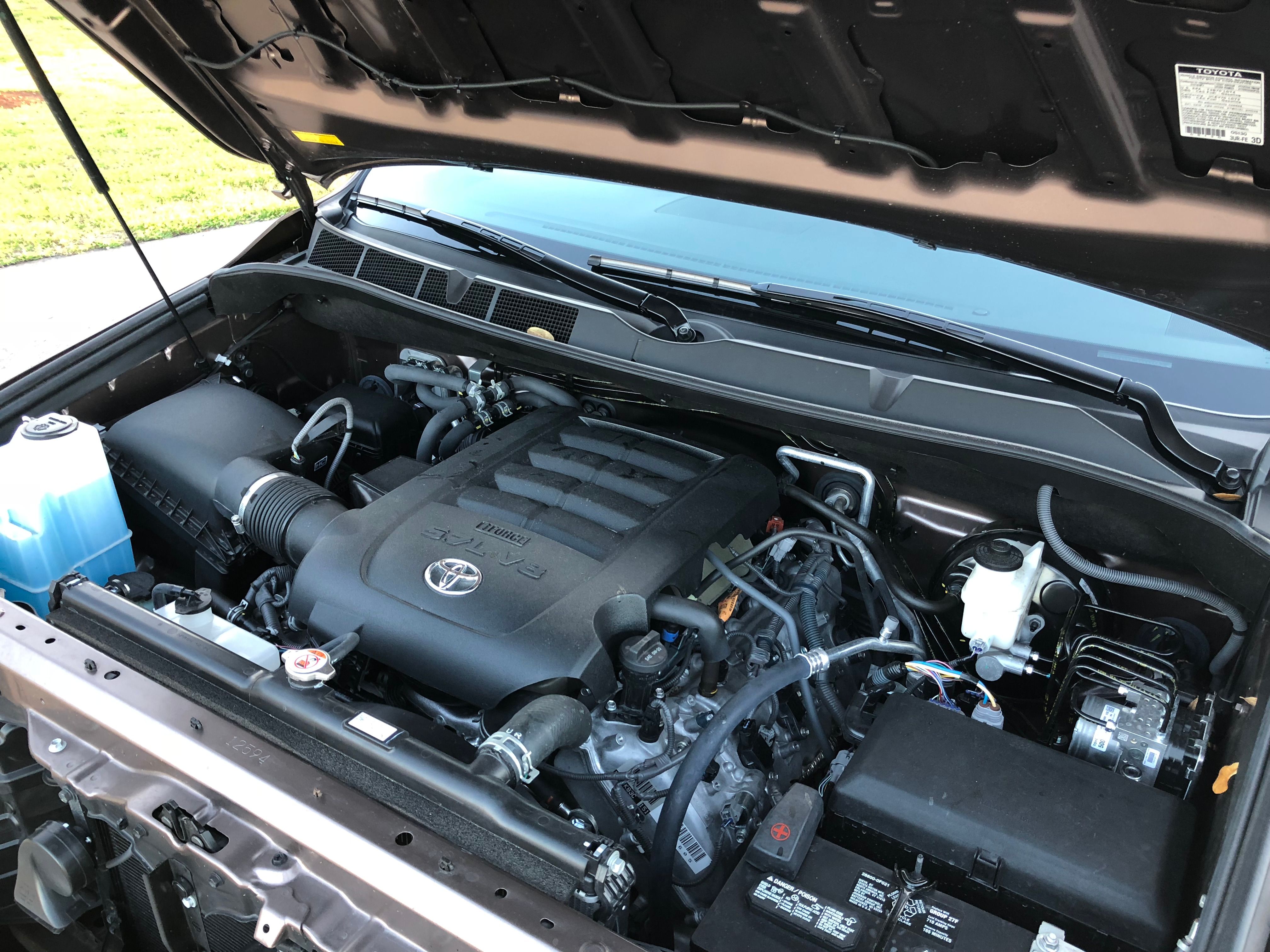The Toyota Sequoia has undergone a mild refresh for 2018, bringing a slightly different front fascia, a slightly revised dash, and the Toyota Safety Sense-P as standard equipment. But unfortunately, the rest of this full-size SUV dates back to 2008. Yep, that’s a full decade without change. That includes the 5.7-liter V-8, six-speed automatic transmission, and the optional part-time 4WD system.
Now, the 5.7-liter isn’t a bad engine. Its dual overhead camshafts use variable valve timing on both the intake and exhaust sides to offer better low-speed efficiency with high-end power. The engine generates 381 horsepower at 5,600 rpm and 401 pound-feet of torque at 3,600 rpm. And like all good V-8s, the engine makes plenty of torque down low; Toyota says the 5.7-liter makes 90 percent of peak torque at just 2,200 rpm. That certainly helps with off-the-line power and allowing the six-speed automatic to up-shift sooner and hold gears longer.
Nevertheless, the V-8 does not have modern features like cylinder deactivation or direct fuel injection. And these days, eight- and 10-speed automatic transmissions continue to squeeze more and more from a gallon of gas.
The Sequoia, on the other hand, is EPA-estimated to only achieve 13 mpg city, 17 mpg highway, and 14 mpg combined. Over the last few days of mixed driving, I’m only averaging 13.3 mpg. Ouch.
Continue reading for more information.
Yet another factor in the Sequoia’s poor fuel economy is weight. The three-row SUV weighs between 5,730 and 6,000 pounds. By comparison, the Chevrolet Tahoe weighs between 5,356 and 5,631 pounds and the new aluminum-bodied 2018 Ford Expedition tips the scales at 5,433 to 5,692 pounds.
Both Chevy and Ford make use of modern, lightweight materials like high-strength steels and aluminum. The Toyota is using technology developed in the early 2000s and first used on the then-new 2007 Toyota Tundra pickup.
The last major ax blow to fell the big Sequoia is its axle ratio of 4.30:1. That is incredibly low gearing for a vehicle not designed to tow more than 7,400 pounds. Heck, even the 2018 Ram 3500 has a maximum rear axle ratio of 4.10:1, with other choices being a 3.73 and 3.42. More comparatively, the 2017 Chevy Tahoe comes standard with a 3.08 rear end and has a 3.42 ratio with its Max Trailering Package. Likewise, the 2018 Ford Expedition has three available ratios: 3.15, 3.31, and 3.73.
As a refresher, the greater the axle ratio number, the more revolutions the driveshaft (and therefore the engine) has to turn in order to spin the wheels one revolution. Larger numbers are great for low-end torque, but sacrifice top-end power as the drivetrain has to work harder for faster highway speeds.
|
EPA Estimated Fuel Economy (city/highway MPG/combined) |
|
|
Toyota Sequoia |
13/17/14 |
|
Chevrolet Tahoe 5.3L |
16/22/18 |
|
Ford Expedition |
17/23/19 |
References
Toyota Sequoia
What’s New on the 2018 Toyota Sequoia
Read our full review on the 2017 Toyota Sequoia.
Read more Toyota news.



